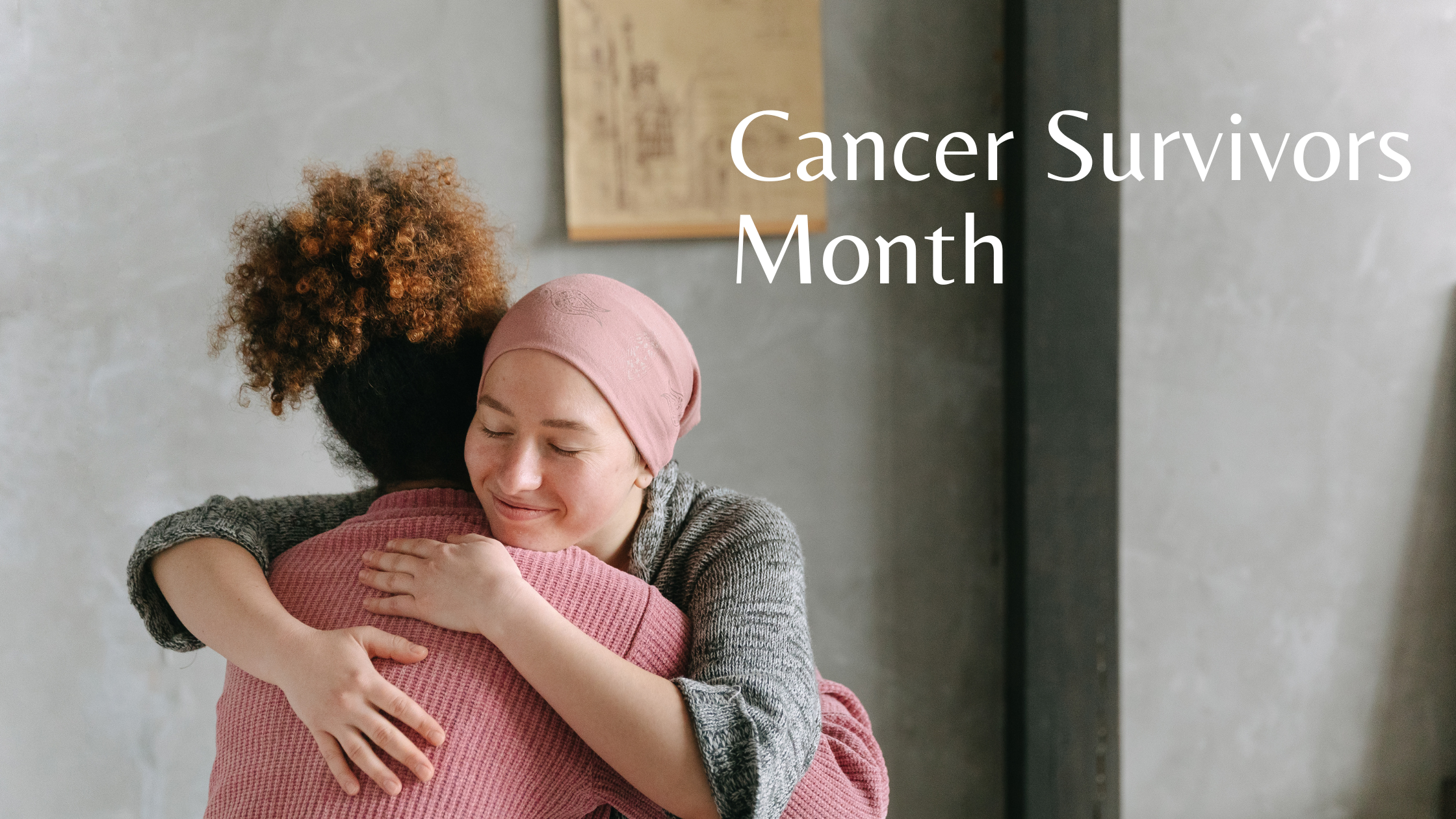
Did you know that June is Cancer Survivors Month? According to the National Cancer Institute, a person is a “cancer survivor” from the time they’re diagnosed through the balance of their life. As research and treatments evolve, experts believe that cancer survivorship will increase in the coming years.
Cancer Survivor Facts and Figures
According to the American Association for Cancer Research, there are currently more than 18 million people in the United States who are cancer survivors. That’s approximately 5.4% of the population! Currently 69% of survivors have lived for 5 or more years since their diagnosis, 47% have lived 10 or more years since their diagnosis, and 18% have lived 20 or more years since their diagnosis. And over the next decade, experts predict that the number of people who have lived five or more years after cancer diagnosis is projected to increase approximately 30%. Among today’s cancer survivors, the most common cancer types are:
- Female breast cancer – 22% or 4.1 million
- Prostate – 20% or 3.5 million
- Colorectal – 8% or 1.4 million
- Gynecologic – 8% or 1.4 million
- Melanoma – 8% or 1.5 million
Here at Circles, there’s one particular cancer survivor metric that catches our eye: According to the National Cancer Institute, 25% of cancer survivors have persistent problems including anxiety, depression, and other psychological and social (psychosocial) distress.
Cancer Survivors’ Unique Mental Health Challenges
In a recently published interview with the National Cancer Institute, Dr. Patricia Ganz, M.D. of UCLA’s Jonsson Comprehensive Cancer Center provided a lot of valuable information regarding the unique mental health challenges cancer survivors face.
Cancer diagnosis and treatment bring a lot of questions–Will I be able to continue to work? How much will treatment cost? How do I keep the cancer from coming back? How will this affect my home and family life?
But these questions and anxieties aren’t always addressed. Clinicians working with cancer patients tend to focus on patients’ physical symptoms more than their psychological symptoms. Sometimes feelings of depression or anxiety don’t even come up when care teams are so focused on the physical aspects of treatment.
Furthermore, patients themselves can be highly focused on their physical treatments and may not check in on themselves psychologically. According to Dr. Ganz, the emotional impact of diagnosis and treatment often arises late–up to six months or a year after treatment ends. And while a person may appear to be thriving on the outside, their mental health may be incredibly fragile.
Because of the highly specialized nature of healthcare and cancer treatment, it’s also difficult for oncologists and other specialists to recognize the signs that a patient might be struggling mentally. In many instances, care plans lack any kind of integration with mental or other aspects of whole-person health. And any time stress hormone levels are high, (such as during cancer treatment), there’s a potential for inflammation in the brain. The body’s reaction to stress can vary based on an entire life’s worth of experiences (including childhood trauma, etc). This, combined with potentially toxic and physically stressful treatments, can take a significant toll on patients.
Luckily, although progress is slow, many insurance plans are realizing that not addressing mental health needs can be more costly to them in the long run. In fact, clinics that screened for depressive symptoms and made appropriate mental health referrals experienced a decrease in oncology visits. While it’s difficult to pinpoint the exact cause and effect, it’s understandable that patients who are worried or anxious would come back to see their doctor more frequently (and rack up more claims costs).
Here’s What You Can Do
If you or a loved one are a cancer survivor, speak up! Care teams need to know how their patients are feeling. And of course, we at Circles have groups and support that can help. Download the app today to connect with other cancer survivors and families of cancer survivors to talk with people who have been there and understand.



